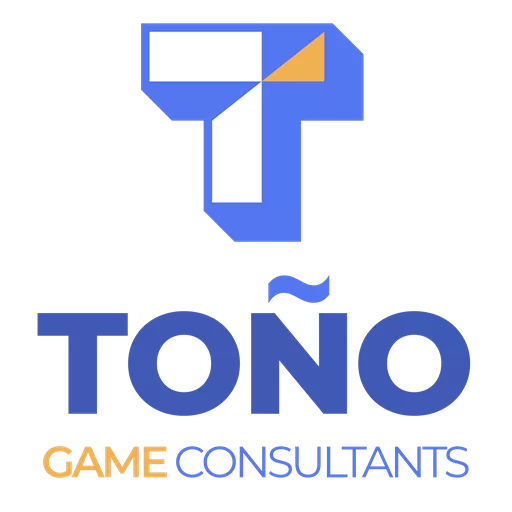The primary goal of Game AI is to increase player engagement and fun — whether that’s by creating enemies that provide a satisfying challenge, companions that feel alive, or systems that enhance gameplay through physics, animation, and interaction.
But to achieve that goal, you need more than clever tricks. Good Game AI development relies on building systems that are clean, scalable, and adaptable. Without that foundation, you risk ending up with code that’s fragile, hard to maintain, and nearly impossible to expand when your game grows in complexity.
The Three Blocks of Game AI
A solid AI system can be thought of as three connected parts:
-
Entity → The creature, ship, or vehicle that actually performs actions. This is where physics, animation, and components live.
-
Controller → The bridge between decision-making and action. A well-designed controller should be swappable with a player controller with little disruption.
-
Brain → The decision-maker. This is where you decide what to do next based on the game state.
If you’re using ECS, the entity is already packed with components. The controller coordinates those components, and the brain tells the controller what action to send down.
Clean separation matters. Without it, you’ll find it painful to refactor or expand your AI later.
The Brains: Different Ways AI Thinks
Here’s where things get interesting. The “brain” can take many forms, and choosing the wrong one can wreck your design.
Finite State Machines (FSM)
The oldest and most battle-tested system. FSMs are still widely used, from locomotion logic to simple enemies. They’re great for clarity and reliability, but they can get unwieldy fast if you try to cover too much complexity.
Behavior Trees (BT)
Popularized after Halo 2, BTs became the “industry darling.” They’re flexible and powerful, but also overused. I’ve personally been turned down in interviews because I proposed a solution other than BTs, even when my approach was more fitting for the problem.
Don’t get me wrong: BTs are great in the right context. But they’re not a silver bullet. Blind adoption of BTs is a classic example of cargo culting. The real question is whether you’re using them just to follow a trend or because they truly serve your project’s needs. If your AI system isn’t easy for both developers or designers to work with, and it can’t gracefully handle the edge cases you’ll inevitably face, then a shiny BT won’t save you.
Utility Systems
One of my favorites. In a utility system, everything is converted into numbers — health, distance to target, ammo left, even player proximity. Each potential action is scored based on these inputs, and the AI chooses the option with the highest value.
This approach is logical, flexible, and excels at nuanced decision-making.
On a larger scale, this same philosophy underpins machine learning, where inputs and outcomes are mapped across huge data sets. But at its core, a utility system is a lightweight, developer-friendly way to achieve believable, adaptable AI.
Rule-Based AI
Rigid but reliable. “If X happens, do Y.” These are useful when you need predictability, like puzzle logic or scripted encounters.
Hard-Scripted AI
Technically not AI, just following a designer’s script. Sometimes this is fine when we are telling a story or showing something that needs to be in a rigid sequence, but it limits replayability.
Planning Systems
Goal-Oriented Action Planning (GOAP) and similar techniques are fantastic for strategy games and complex sims. The AI creates a plan to reach a goal, rather than just reacting.
Machine Learning
About 15 years ago, machine learning started breaking into game AI research, but at the time, it was unfeasible for real projects. The computational demands were simply too high, and the fast-paced nature of games left little room for heavy training or runtime experimentation.
Now, with far more powerful hardware and lightweight approaches, ML has become a viable tool in game development. We can deploy lean models for bots, adaptive systems, or even prebaked data generated from larger models.
Still, it comes with risk: too smart and the AI becomes unbeatable (not fun), too dumb and it feels frustrating. ML is powerful, but it’s not a silver bullet.
Choosing the right “brain” isn’t just technical, it’s about production reality. What’s achievable within your scope, budget, and timeline? That’s where technical production and technical expertise make all the difference.
Why Structure and Choice Matter
A bad AI structure might still “work,” but it won’t scale. A mismatched brain might still ship, but it’ll waste your team’s time and resources.
Think about your next project: is the AI really helping your design, or are you forcing a framework because “that’s what everyone uses”?
The real pros don’t pick what’s trendy, they pick what’s right for the game.
Closing Thoughts
Game AI is only as good as the foundation you give it. Separate brain, controller, and entity. Choose the right decision-making approach, not the popular one. And most importantly, align your AI choices with your production reality.
That’s exactly where we come in. Our Technical Expertise Services help studios avoid wasted effort, pick the right tools, and build AI that’s scalable, clean, and fun.
FAQ: Introduction to Game AI
What is Game AI in simple terms?
Game AI is the system that drives non-player characters (NPCs) and gameplay logic to create challenges, companions, or immersive behaviors. Unlike general AI, its purpose is always to increase fun and engagement. Good Game AI is clean, scalable, and adaptable, not just a collection of hacks.
Why does AI need a clear structure (Brain, Controller, Entity)?
Separating AI into these three blocks makes it easier to maintain and expand. The brain decides what should happen next, the controller translates decisions into inputs, and the entity actually executes actions (animations, physics, etc.). Without this separation, AI systems quickly become messy and unmanageable. This is especially true in ECS-based engines where components need clarity.
Are Behavior Trees the best AI system?
Not always. Blind adoption of BTs is a form of cargo cult. They look neat but don’t solve every problem. If your AI isn’t easy for both developers and designers to work with, or if it can’t handle edge cases gracefully, a Behavior Tree won’t save your project. The real question is: does the system fit your game’s needs, or are you just following a trend?
What are Utility Systems in Game AI?
Utility systems convert inputs (like health, distance, or ammo) into numbers. The AI then weighs possible actions based on their scores and usually favors the stronger options, but not always the absolute top one. Adding a touch of randomness or tolerance keeps the AI from being too perfect, making its behavior feel more human, surprising, and ultimately fun. These systems scale well into more complex approaches, including lightweight ML.
Is Machine Learning used in Game AI today?
Yes, but carefully. Fifteen years ago, ML wasn’t feasible for real-time games because of computational limits. Now, with more powerful hardware, developers can integrate lightweight ML or prebaked models. Still, ML is risky: too smart and the AI becomes unbeatable, too dumb and it breaks immersion. It deserves its own series of deep dives later.
How do I decide which AI system to use?
It depends on what you’re trying to achieve. Finite State Machines (FSMs) remain extremely useful for animations, which is why they’re still broadly used today. For gameplay logic, the choice depends on your game’s requirements and your team’s technological constraints. Engines like Unreal Engine push Behavior Trees (and now State Trees, which are a form of FSM), so unless your team is willing to invest in building more efficient or flexible systems, you may be cornered into those defaults. The key is aligning your AI approach with both the game’s needs and your production capacity.
What’s the role of technical expertise in Game AI?
Without strong technical guidance, it’s easy to fall into messy, short-sighted systems that block future improvements. Solid technical expertise ensures your AI architecture is chosen, implemented, and scaled the right way.


